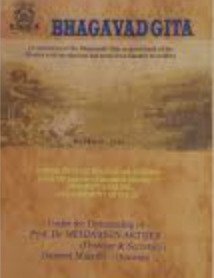At a time of rising religious polarisation, Hyderabad’s Dairatul Maarifil Osmania is setting a remarkable example of interfaith harmony by preserving sacred Hindu texts like the Bhagavad Gita and Ramayana in Arabic and Persian.
Located within the Osmania University campus, this 136-year-old Oriental Research Institute was founded in 1888 by the 6th Nizam, Mahboob Ali Pasha. Traditionally known for editing and publishing rare Arabic manuscripts, Dairatul Maarif has published over 240 scholarly titles across 800 volumes.
Among its most notable contributions is the Arabic edition of the Bhagavad Gita, titled ‘Al Kita’, translated from Sanskrit by Dr Makhan Lal Roy Choudhury of Calcutta University. First published in 1951 and reprinted in 2016 under the Government of India’s Hamari Dharohar Scheme, this edition includes extensive introductions and scholarly annotations, making it a vital resource in comparative religious studies.
Prof SA Shukoor, Director of Dairatul Maarif, said the institute’s mission is to foster cultural and religious understanding. Their library also houses a Persian translation of the Ramayana, further reflecting their inclusive academic vision. Both texts are meticulously preserved using modern archival techniques.
Dr Choudhury translated the Gita during his tenure at Al-Azhar University in Cairo, under the mentorship of Prof Muhammad Habib Ahmad. The effort was supported by Dairatul Maarif, which provided financial and publishing assistance.
Today, the Arabic Gita has found readers worldwide, particularly in the Middle East, and is being used by scholars for research in interfaith and comparative religion.
Former Law Minister Asif Pasha, after visiting the institute, praised its role in nurturing harmony through knowledge. “Dairatul Maarif is a beacon of intellectual and cultural unity in an increasingly divided world,” he said.
The institute’s commitment to preserving the spiritual heritage of all faiths stands as a powerful reminder of the unifying strength of scholarship.







